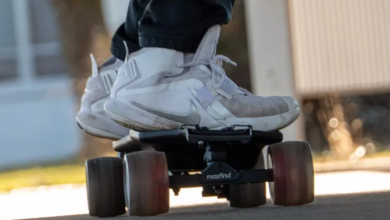Understanding Firearm Calibers and Their Applications

Firearms are complex tools with various components that contribute to their performance. Among these components, firearm calibers play a significant role in determining the weapon’s characteristics and applications. Understanding Gun calibers is crucial for both enthusiasts and professionals in the field. In this comprehensive guide, we delve into the intricacies of firearm calibers and explore their diverse applications.
What is a Firearm Caliber?
A firearm caliber refers to the internal diameter of the gun barrel and the corresponding size of the bullet it fires. Calibers are typically measured in inches or millimeters. For instance, a caliber of “.45” indicates a bullet diameter of 0.45 inches, while “9mm” signifies a bullet diameter of 9 millimeters.
The Importance of Choosing the Right Caliber
Selecting the appropriate caliber for a firearm is crucial as it directly impacts the weapon’s performance and suitability for specific tasks. Factors such as range, penetration, stopping power, and recoil are influenced by the chosen caliber. Thus, understanding the characteristics of different calibers is essential for achieving desired outcomes in shooting scenarios.
Common Firearm Calibers and Their Applications
1. .22LR
The .22 Long Rifle (.22LR) is one of the most popular and versatile calibers available. It is commonly used for target shooting, plinking, and small game hunting due to its low recoil and affordability. Additionally, .22LR firearms are often chosen for training purposes due to their minimal noise and recoil, making them ideal for beginners.
2. 9mm
The 9mm caliber, also known as 9x19mm Parabellum, is widely used in handguns for self-defense, law enforcement, and military applications. It offers a balanced combination of stopping power and manageable recoil, making it suitable for individuals with varying levels of shooting proficiency.
3. .223/5.56mm
The .223 Remington and 5.56x45mm NATO calibers are commonly found in rifles and carbines. These calibers are popular among sports shooters and hunters for varmint control and medium-sized game hunting. Additionally, the .223/5.56mm is the standard caliber for military rifles due to its accuracy and reliability in combat situations.
4. .308/7.62mm
The .308 Winchester and 7.62x51mm NATO calibers are renowned for their long-range accuracy and power. These calibers are favored by hunters and long-range shooters for big game hunting and precision shooting competitions. Furthermore, the .308/7.62mm is utilized in military sniper rifles for its effectiveness at extended ranges.
Factors to Consider When Choosing a Firearm Caliber
When selecting a firearm caliber, several factors should be taken into account:
- Intended Use: Determine the primary purpose of the firearm, whether it’s for self-defense, hunting, target shooting, or competition.
- Recoil Sensitivity: Consider the shooter’s tolerance for recoil, as excessive recoil can affect accuracy and shooting comfort.
- Ammunition Availability: Ensure that the chosen caliber has readily available ammunition for consistent practice and use.
- Legal Restrictions: Be aware of any local or federal regulations regarding firearm calibers and their permitted applications.
Conclusion
In conclusion, understanding firearm calibers is essential for maximizing the performance and effectiveness of firearms in various applications. By considering factors such as intended use, recoil sensitivity, and ammunition availability, shooters can make informed decisions when selecting the appropriate caliber for their needs. Whether for target shooting, hunting, self-defense, or military use, choosing the right caliber is paramount for achieving desired outcomes.




